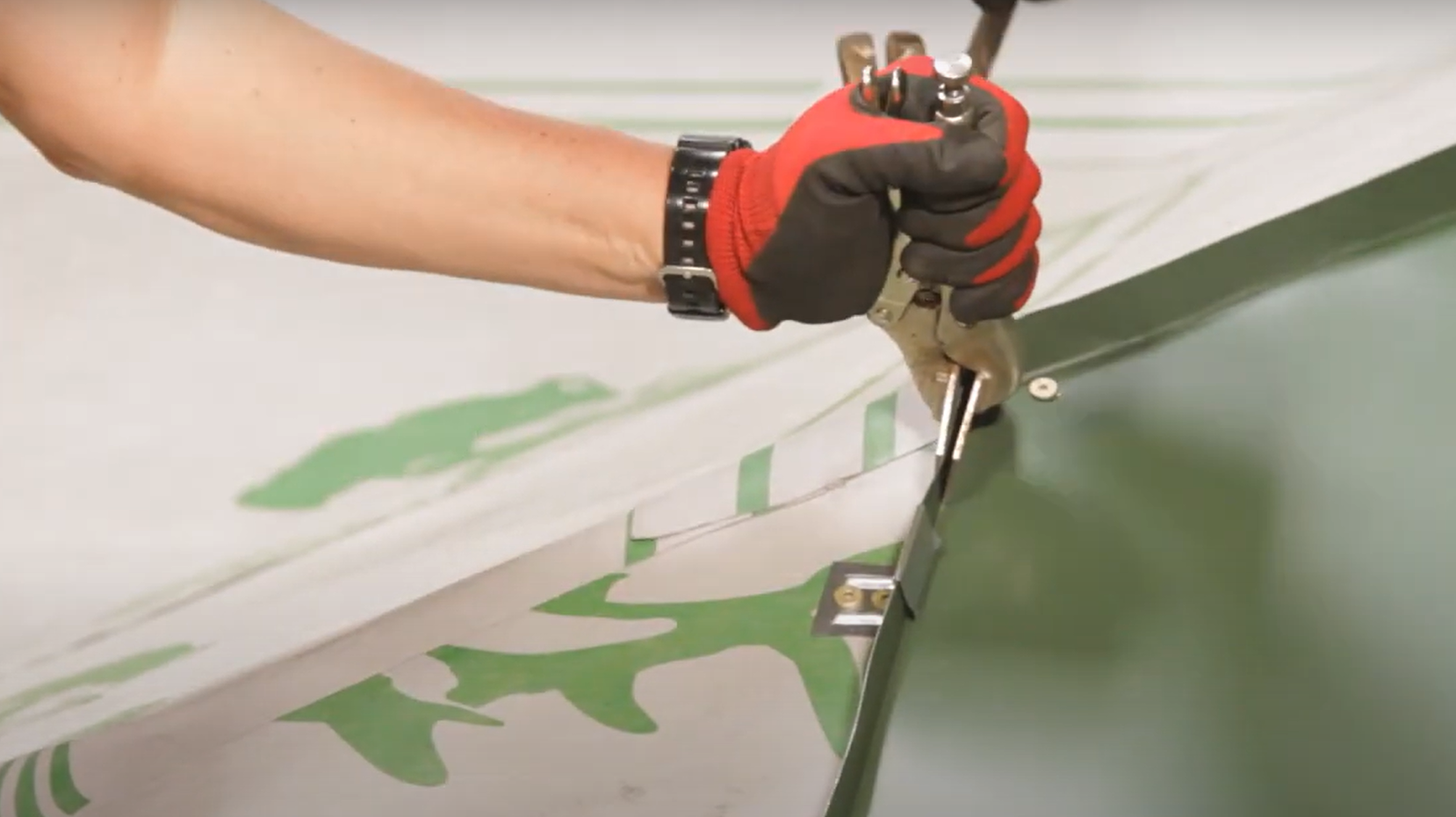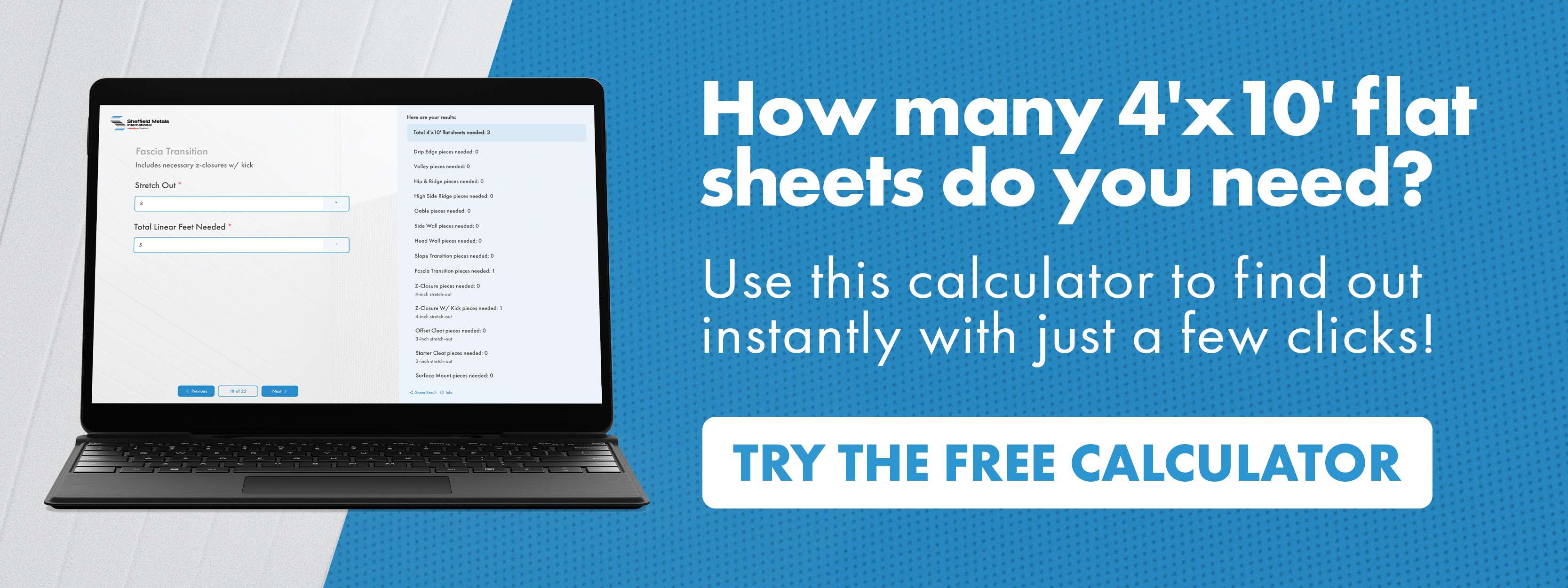Installing a metal roof can be complex. You need to understand the materials you’re working with and have an in-depth knowledge of the craft. With such a focus on technique and preciseness, you want to ensure you have the right tools to match.
Sheffield Metals International (SMI) provides metal roofing materials and supplies, including coils, sheets, and accessories. We also provide valuable information, via our Architectural and Technical team and resources in the Metal Roofing Learning Center. By working with countless metal roofing contractors over the years, we’ve learned what it takes to install a metal roof and what tools are worth packing for your next project.
In this article, we’ll review what tools you’ll need to install a metal roof successfully.
What Tools Do I Need for a Metal Roof Installation?

Keep in mind that many of the tools you use for your metal roofing project will come down to personal preference. Most of these tools will come in a variety of different measurements and brands, so it’s up to you to choose the one you feel most comfortable with, and which would be most effective for your specific job.
Hammers
A hammer is a good tool to have on any job site. A smooth face is recommended, along with a straight claw in case you need to take anything off. You can also find ergonomic options for hammers that will reduce strain on the wrist and elbow.
Riveters
Riveters come in all shapes and sizes. Be sure to judge your unique project and which product would work best for you.
Flangers

Used for creating details and bending metal, this tool has many names (duckbills, tongs) and comes in an array of colors, designs, and applications.
If you’re looking for versatility, consider vise-grip duckbills — these allow for use on many different types of projects and scenarios. Similarly, compression flangers are an excellent choice for many different applications.
High-Compression Caulking Gun
High-compression caulking guns are very effective when working on a larger job, speeding things along and improving efficiency for your project.
Hemming Tools
Hemming tools enable the manipulation of metal panels — you can find these at any tool distributor in different measurements.

Screwdrivers
A screwdriver is useful for bending materials, opening hems, and performing any other small tasks you may have to maneuver during installation.
Putty Knives
Make sure you have putty knives on hand for applying sealant to projects.
Aviation Snips

Aviation snips, also known as “reds” and “greens,” are used to cut metal. Snips come in pairs – with “reds” cutting to the left and “greens” cutting to the right. You can also find larger pairs of snips that cut straight through longer pieces of metal.
Tape Measures
Tape measures are essential for finding correct measurements on roofs and staying as precise as possible during installation. These range from pocket-sized minimalistic approaches to having the ability to measure full panel lengths over 100 feet.
Cordless Double Cuts and Shears

These tools can shear metal at any length and are some of the most effective tools for cutting through metal.
Double cuts and shears are ergonomically designed, providing efficient work that helps reduce fatigue. Both are unique and, when used properly, can leave a clean cut.
Double cuts also allow the material to exit through the device itself, making cleanup simpler.
Edge Markers
This tool marks the metal at whatever you set the increment at. Edge markers may not be appropriate in certain situations, as you don’t want to mark up the exterior surface of the metal. But for hemming at a specific location, an edge marker can be just the tool you need.
Chalk Lines
Similar to edge markers, chalk lines will help you mark lines on a surface and cut straight lines between points. Just be sure to always clean it off and ensure there’s no chalk residue left behind.
Torque-Controlled Power Drill/ Driver

Torque-controlled devices like screw guns will help control the depth in which you put your screws and defend against fracturing the screw or “spin out” where the fastener has been stripped out, negating the pull-out potential.
When using a standard drill, it’s common to fracture the screw without knowing it. Because of this, a sander drill and impact tools are not recommended for metal roof installation – instead, opt for a torque-controlled tool that will give you more depth control, resist strip-outs, and help with seating the fasteners on exposed fastener systems.
Where Can I Find More Information About Metal Roof Installation?
There is a huge amount of variety when it comes to choosing tools, whether it be size, brand, or application. The key is to find the right tool for your unique situation, taking into account what specifics you’ll need for your project and which tool will give you the best utility. With the right tools, you can have a successful installation and remain safe throughout the project.
After reading this article, you should have a better idea of what tools you’ll need to install a metal roof. Now, you may be looking for metal roofing installation best practices, or how to handle materials during installation. Visit the Metal Roofing Learning Center for more information on metal roofing installation.
Sheffield Metals also provides metal coils, sheets, and accessories, along with expert guidance from our Architectural and Technical team. Reach out today with any questions.
